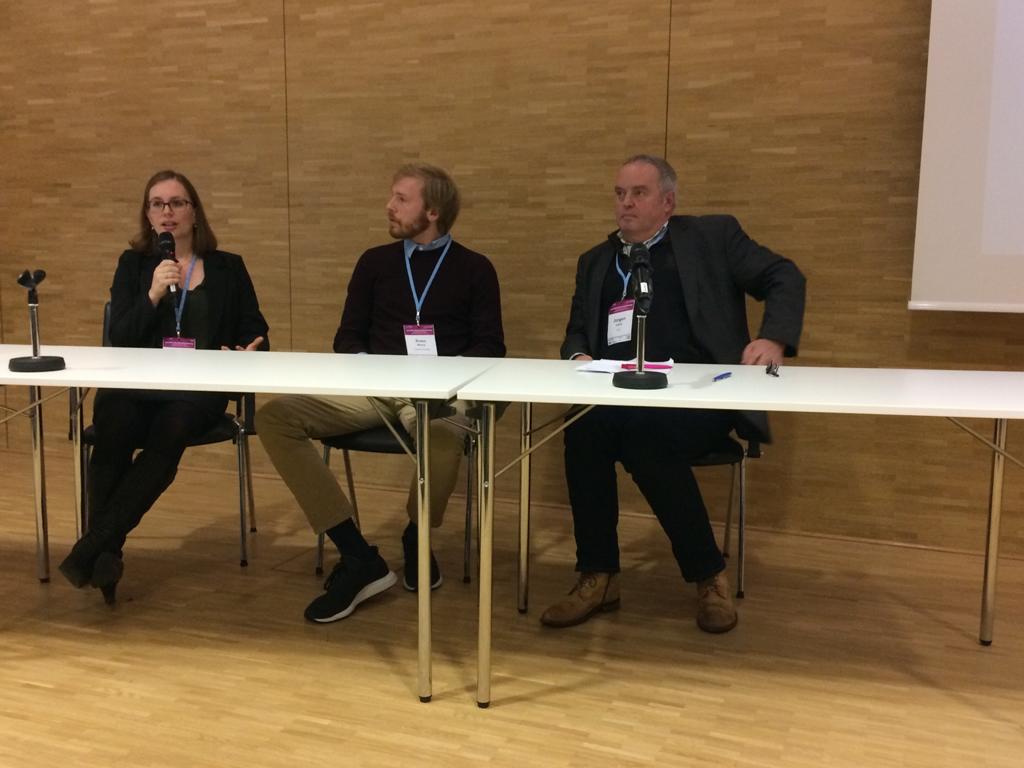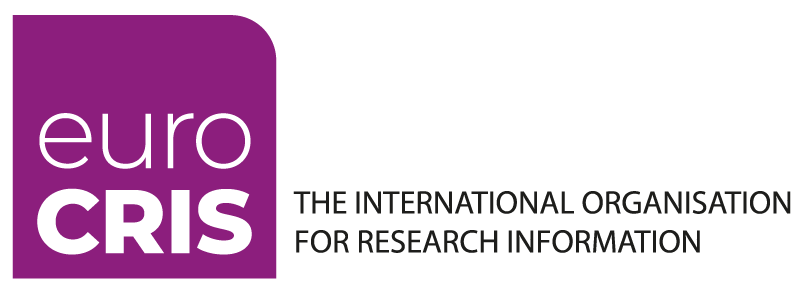This document was drafted based on the conclusions of a panel discussion on research classifications at the euroCRIS Strategic Membership Meeting in Münster on November 19th, 2019.

Left to right, Hanne Poelmans (U Hasselt), Sven Blanck (Uni Leipzig) and Jürgen Güdler (German Research Foundation, DFG)
at the Round Table discussion on Research Classifications, Münster membership meeting, Nov 2019
Plenty of research information systems have been developed by a wide variety of stakeholders over the last decade. All these CRIS systems share the common goal of collecting and reusing research information in order to facilitate research by reducing the administrative burden. This applies both in terms of facilitating research cooperation and research reporting. The interoperability of such systems is guaranteed by standards like CERIF, developed and maintained by euroCRIS, an international organization that promotes collaboration within the research information community. Although many standardisation efforts have been successful so far, research classifications are not yet aligned. However, these systems are still being used as tools to characterise research information. With this in mind and the vision of the EOSC ahead, euroCRIS wishes to express its viewpoints on the inclusion of research classifications in the EOSC based on the conclusions of a panel discussion held on research classifications at the EuroCRIS Membership Meeting in Münster, held on November 19th, 2019.
Research classifications have historically stemmed from a specific use purpose and within a specific context. This has resulted in a wide variety of research classifications in terms of hierarchical layers, granularity and specific disciplines included. The experience in harmonising research classifications available within the euroCRIS community proves that this is a daunting task which is largely realised at a country level if a complete harmonisation to the lowest level of granularity needs to be achieved. However, if research classifications are evaluated on a higher hierarchical level, these levels are, in most cases, largely reflecting the OECD FORD classification. A first recommendation of euroCRIS would then be to stick to this internationally agreed classification as a starting point in order to classify research. This not only facilitates concordance to existing classifications in member countries, given that the concepts are very similar, but is also useful for keeping in line with (statistical) reporting purposes.
A second recommendation of euroCRIS would be to ensure a fair distribution of subdisciplines on the lower hierarchical levels of the research classification. This principle has direct implications on the possible methods used for creating such well-balanced, yet more granular classification level. Although in many contexts, text mining approaches have been used as a valuable method to define clusters of subdisciplines, a caveat should be placed against applying this technique as a general method for all disciplines. For instance, humanities and the arts are research disciplines that should be evaluated through an experimental approach based on the conventional methods of working within these disciplines. Furthermore, it was stressed that peer review of the resulting classification should always be considered as it is paramount that researchers in the end should feel comfortable with these classifications. This in itself implies that the concepts of the research classifications should be semantically explained in order to make the terms used clear for the entire research community, i.e. from information providers to information consumers.
Finally, a third recommendation was made on the dynamics of research classifications. It is clear that the research ecosphere is constantly evolving, and this also accounts for the research classifications that are built with the purpose to cluster related information according to real world needs. Therefore, a continuous monitoring of research classifications is required, both in terms of the structure as well as the concepts laying behind the discipline code terms used.
As an international organisation promoting the interoperability of research information systems, euroCRIS has included specific strategic goals on the promotion of standardisation in semantics in its workplan. More specifically, euroCRIS aims to align the semantic description of research information concepts and research classifications in order to create a global vocabulary for research information. Furthermore, euroCRIS will create, disseminate and maintain an inventory of current research classification standards and related concordance schemes which contributes to the development of a global standard classification scheme for research. From these work lines and the overall strategy of euroCRIS as an organisation, we are open to interact with key stakeholder groups in Europe and beyond in order to contribute to the development of a global standard classification scheme for research.


